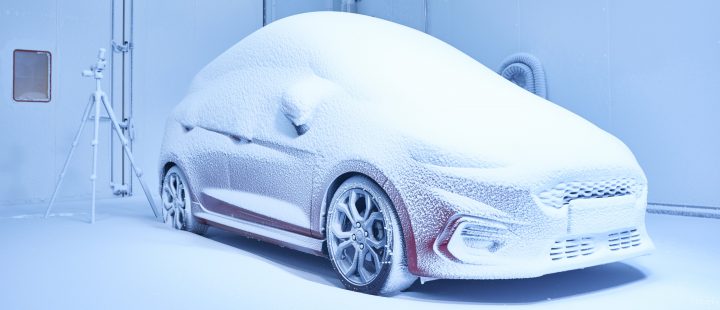EV Specialists at YESSS Electrical explain how cold weather can affect your EV and how you can solve this.
Sub-zero temperatures can often cause a noticeable reduction in EV range, with charging taking longer than usual too. You may be wondering why this is happening. Well, the temperature of an EV’s battery greatly affects the charging speed.
| An EV battery ideally needs to charge at a temperature of around 20-40 degrees which can be difficult to achieve during the cold winter months.
Once the temperature drops below this number, the electrochemical processes in the battery slow down which can affect the charging speed and usable range of an EV. How Do Lower Temperatures Impact EV Charging Speeds? If you park your car outside your home overnight, which most of us do, your EV battery will need to use a lot of energy to reheat itself. So, when you charge your vehicle, some of the energy will be used to heat up the battery instead of directly charging it. As a result, charging speeds may be slower and the time it takes to charge your EV battery will be longer. Once the battery reaches operating temperature, the range should be better and you should be able to charge your EV much more quickly. EV Charging in Cold Weather: How To Avoid Low Charging Speeds Although it is difficult to avoid low charging speeds in winter, there are a few ways you can try to steer clear of a cold battery. Preheat the Battery You should try to wait as long as possible before attempting to charge your EV. This will give your battery time to get warm, making charging faster. Alternatively, some EVs will offer the choice to preheat the battery. If you choose this setting, your car will heat up the battery ready for you to charge which can help to reduce the amount of time spent charging. Park Indoors Although most people will not be fortunate enough to have the option to park indoors, if you do have the opportunity, then it may be wise to. Parking indoors can help to provide your EV with a warmer environment so you don’t need to spend as much time charging it. Even if you’re out and about – try to opt for multi-storey car parks instead of parking on the side of the road. Keep Your EV Charged When it’s cold, EV batteries like to preserve power to heat up. So, if you always keep your battery at around 50% or just below, it should have enough power to heat up the battery and provide you with a good amount of range. |
How To Maximise the Range of Your Electric Car in Winter
Cold weather can significantly reduce the range of your EV. So, how can you avoid this? Check Your Tyre Pressure Regardless of the season, you should always check your tyre pressure and make sure it is at the correct inflation level which can be found in the car’s manual or on the side panels of the door. Under-inflated tyres can cause the car to feel sluggish and increase energy consumption, thus reducing the range. Adjust Your Driving Style To save energy and maximise the range of your car, avoid breaking too heavily or accelerating too fast. Driving as smoothly as possible can help to save power. If you find this difficult, try putting your EV into eco mode if it has the option to do this. Use Heated Seats Instead of the Heater If you have the option to, switch to using heated seats when you’re cold, rather than turning up the temperature on the A/C. Car air conditioning can take up a lot of power when compared to heated seats, thus reducing the range of the car. Home EV Charging It can take a lot longer to charge an electric car in winter, especially when you’re charging with a low-speed public charger. With a home EV charger, you can optimise your EV battery performance and conveniently charge your car right on your doorstep. Most EV home chargers offer charging speeds of around 7kWh, which is twice as fast as charging with a conventional 3-pin plug. If possible, you can even install your home EV charger indoors so you can park your car somewhere warm to preserve the battery and range. |


